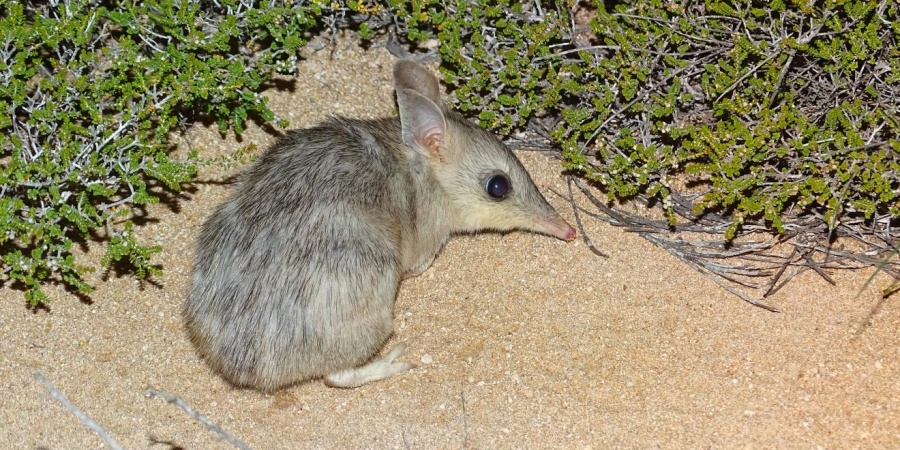
Coinciding with National Threatened Species Day, Department of Biodiversity, Conservation and Attractions (DBCA) scientists will translocate more than 20 bandicoots from nearby Bernier Island into safe habitat at Dirk Hartog Island National Park.
Recognisable for its pointed ears and long tapered snout, the Shark Bay bandicoot was once found across the north-west of Western Australia before becoming extinct on the mainland in the 1940s. Currently, natural populations are only found in the Shark Bay World Heritage area.
This release of bandicoots marks a key milestone in the restoration project, which aims to revitalise and support native ecological systems following the eradication of feral cats, goats and sheep on the island.
The release follows the successful reintroduction of 72 bandicoots to the island in September last year. Monitoring by DBCA has shown these animals are thriving in their new habitat.
Since commencing the wildlife reconstruction stage of Return to 1616, the project has seen the successful translocation of rufous and banded hare-wallabies, Shark Bay bandicoots, and dibblers.
Comments attributed to Environment Minister Stephen Dawson:
"This Shark Bay bandicoot release is a real cause for celebration, not only for the future of the species but for Dirk Hartog Island's entire ecological system.
"The Return to 1616 project is certainly no mean feat, but it is incredibly important for us to create feral cat-free sanctuaries that support our native species and ensure they can thrive for generations to come.
"Sadly, much of the native fauna that Dirk Hartog himself would have encountered on the island more than 400 years ago has since become locally extinct due to the historic introduction of feral animals.
"As the Shark Bay bandicoot is vulnerable to extinction, every individual animal released into safe habitat makes a big difference to the future of the species.
"On National Threatened Species Day, I am very pleased more than 20 healthy, genetically viable bandicoots will find their homes at Dirk Hartog Island National Park as part of this restoration project."